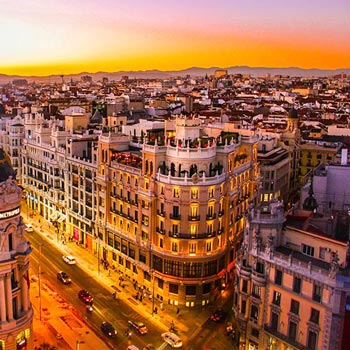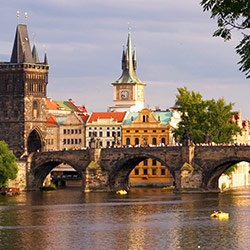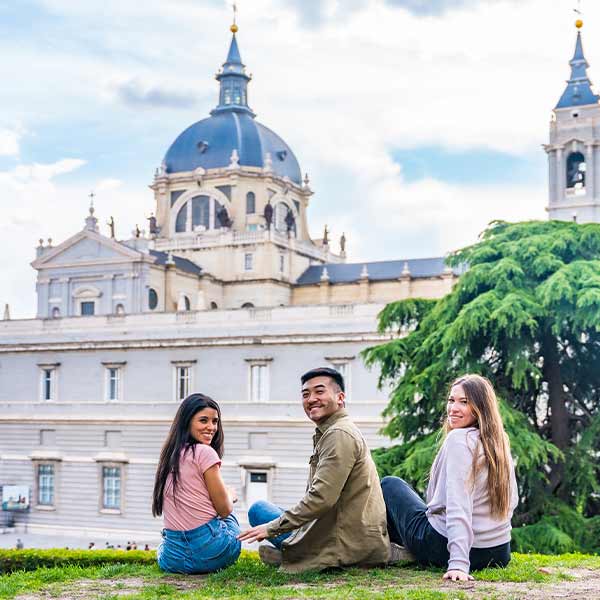Living the Pura Vida Life and Embracing Costa Rican Culture During My Homestay
My Host Family
A month into my stay in Costa Rica, I encountered some challenges with my host family in Costa Rica that led me to move to a new home—an unexpected change that led to new experiences and connections. Thankfully, CEA CAPA onsite staff were very supportive during this time, helping me navigate the transition while ensuring that I felt comfortable through it all.
Though it was a challenge to move, it was worth it in the end, and I feel like my new host family is the perfect fit for me. My new host family is my host mom, her brother, and two other students in my program who I knew from my classes here. One of the students that I live with even goes to my home university in the U.S. We have the same major and work at the same place in the U.S., but we never crossed paths until we got to San José. It’s really nice to have someone here with a similar background to me.
My new host mom is amazing! She has been a host mom for 20 years, and I am the 419th student that she has hosted. Since she started hosting, she has kept every photo, letter, magnet, and trinket that she has received over the years. She has scrapbooks full of photos and can name every student that she has hosted. She is so kind, funny, and just a delight to be around. Even though we all have different schedules, she makes sure to eat breakfast and dinner with each of us if we can’t all eat together so that we can have time to practice our Spanish and learn more about the culture.
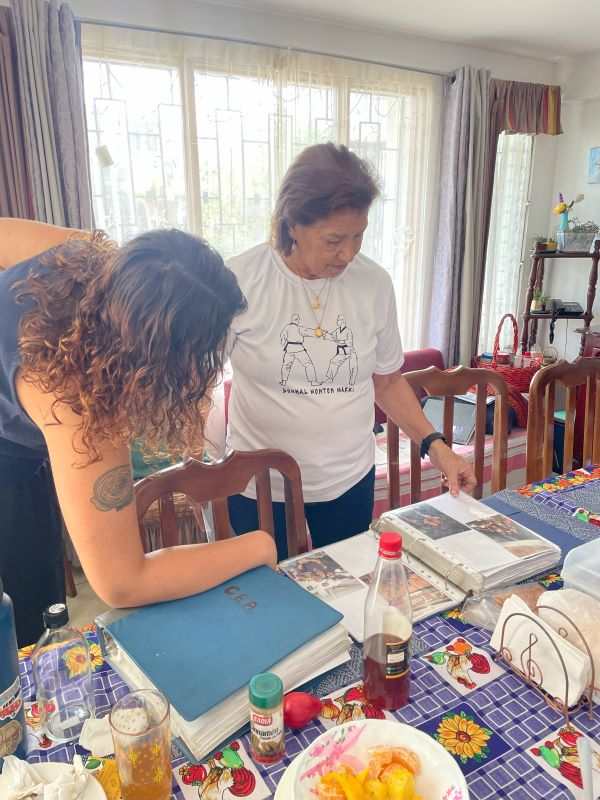
This is my host mom showing us all of the letters that she has from her previous students. She saves every letter, and when her students are about to leave, she has them all write her notes in a notebook.
I’ve been in Costa Rica for five weeks now, and I have learned more Spanish in one week from my host mom than I learned from my previous homestay. I’m always excited to go home to have dinner with her, and hopefully the rest of the family. This week, the other two students, our host mom, and I made très leches cake, a Central American dessert with a family recipe from my host mom. We had such a good time baking together and learning all the Spanish baking terms!
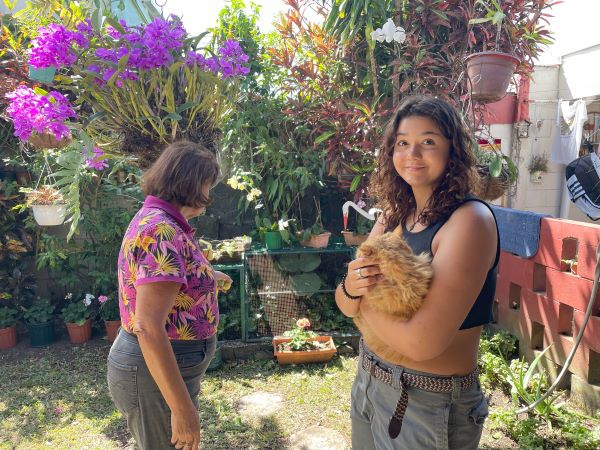
This is my host mom showing us her garden. The big purple flower is the national flower of Costa Rica, the purple Guaria Morada orchid. She loves working in her garden and grows a lot of our food there, and her fishpond is in the back.
Cultural Differences
There have been many cultural differences that I’ve experienced while here and having the right host family makes these differences easier to navigate. Host families are here to share their culture, language, customs, and show students what it is like to be a local. Costa Ricans are referred to as ‘Ticos’ due to the linguistic tendency of them adding ‘-tico’ to the ends of words to signify that something is smaller. For example, “chico,” meaning “boy,” could be referred to as a “chiquitico” meaning that they are cuter and smaller. This is one cultural tendency that I had never learned about before, and it’s unique to Costa Rica.
A Simpler Life: Pura Vida!
One of the biggest differences for me, especially coming from a very fast-paced city like Chicago, is Tico Time. Ticos, known for their “Pura Vida” culture, which means “pure life” and is a calm and peaceful way of living, are known for taking their time so that they can enjoy life while being more present. A large part of this is not having a strict schedule, being able to go with the flow, and being mindful of their lives. From my experience, this includes ending class early to have a nice walk before the sun sets, pulling a bus over on the road to look at a sloth for twenty minutes, and not planning activities at specific times.
As someone who always has everything planned out and is very punctual, this has been a large adjustment for me, but not necessarily a bad one. It’s nice to be able to relax and enjoy the present, and I think that this is a great lesson for me and something that I should take back to the U.S. with me. Being able to relax and stay present in my daily life is something that I need to work on, but with the work and hustle culture in the United States, it can be really difficult to do so.
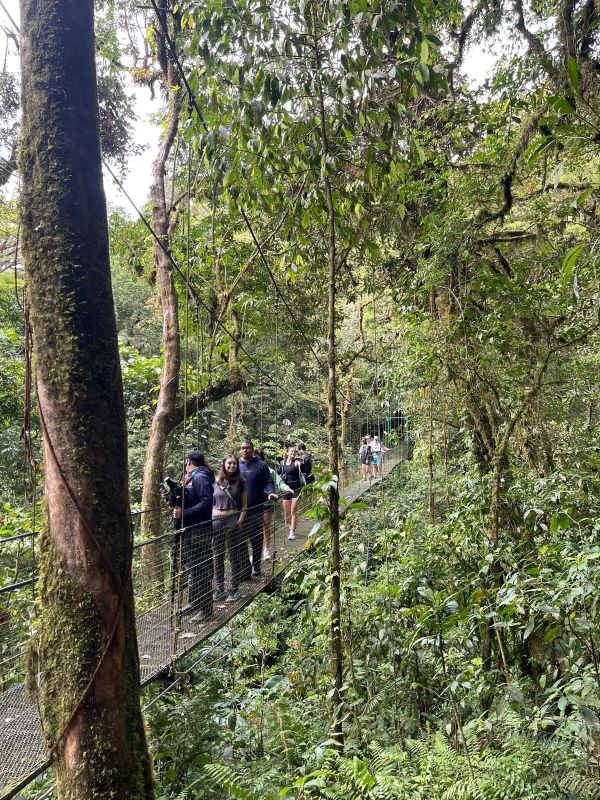
This is a hanging bridges tour that my program did. The tour was scheduled for one hour, but as the tour went on, we saw a lot of interesting animals and plants, so the tour ended up lasting longer than predicted. This is a good example of ‘Tico Time’ and the go-with-the-flow lifestyle here.
Family Dynamics
Another large difference for me is the family-oriented way of living. It’s amazing to me that everyone spends so much time with their family here, and it’s really cool to be able to experience it. My host mom lives with her brother, and her other brother lives across the street from us. Every Sunday, the whole family, including my host mom’s five children, come over to our house for a family day. They talk about their lives, play games, cook together, and just spend lots of quality time together.
In the U.S., I see my family about twice a year. We aren’t very close, and a lot of families in the U.S. are like that because the culture just isn’t family oriented as it is here. The first time my host mom’s family came over, I said that I would go to my room and not bother them, but everyone said, “No, join us! You’re part of the family now!” It was a really nice day spent with them, and I’m so glad that it happens every week so that I can get to know them better.
This is the Basílica de Nuestra Señora de los Ángeles. This is a very important location in Costa Rica for people from around the world. People come from all over to learn about La Negrita, who is a representation of the Virgin Mary in Costa Rica, and the importance of religion here.
Food Culture in Costa Rica
The food has also been a culture shock for me. As a vegetarian, it has been very easy for me to find food here that is nutritious and healthy. Rice, beans, fruits, and vegetables are the main staples in Costa Rica. Every meal comes with fruit on the side, and most also have gallo pinto. Gallo pinto is a very common food here with rice, beans, sauces, and seasonings mixed in. I didn’t really like beans before coming here, but I’ve grown to love them. Foods here are also fresher than they are in the U.S. My host mom goes to the market every day to buy fresh vegetables and meat for my roommates. With fresh ingredients and healthier foods, I feel like I have more energy after I eat every day and smaller meals last longer for me.
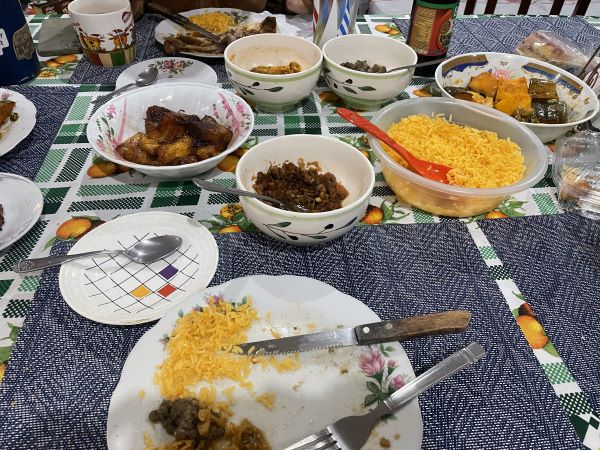
This was the best food that I’ve had since I got here, and maybe in my whole life! It is rice, beans and lentils, squash, plantains, and a soy and cabbage mixture for our rice. This is what a lot of our meals look like.
Though there have been a lot of cultural differences, I’m glad that I’ve had the chance to experience them, and I hope that I can take these cultural differences back to the United States with me to share the Costa Rican culture with others.
